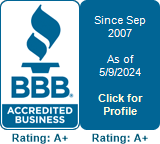Create a Practical and Useful Category System for Business Accounting
- By Admin
- •
- 10 Apr, 2020
- •

How you categorize expenses may not seem like a significant part of running your small business, but it can have a major impact. When you group together expenses in the right way, you can learn much more about how you spend and earn money as well as how you can improve your bottom line.
If your business is starting to categorize expenses within its accounting system, you may find it hard to know where to begin. To help you with this important, but often little-understood, task, here are four key tips for organizing costs within your books.
1. Talk With a Bookkeeper
Before embarking on a project that involves so many aspects of your books, sit down with an experienced bookkeeper to plan ahead.
Creating a chart of accounts (the standard numerical method for organizing income and expenses) can be time-consuming and somewhat confusing. Not all categories will be easily understandable. Some may sound misleading, and miscategorizing could cost time and money.
Meet with your bookkeeper to brainstorm ways to approach this project that will give the information you need without using excessive time and effort. They will also know what categories are generally important. Separating entertainment expenses from meals, for instance, will help your business have the maximum correct deductions at tax time and be more ready for the tax preparer.
2. Set Some Goals
You have almost limitless choices for how to categorize income and expenses, so set some parameters before beginning. What do you want to learn about your costs or earnings? Do you want to rein in expenses in certain areas? Do you want to increase the profit margin on products? Do you want to learn which purchases could be bought in bulk? Do you want leverage with vendors?
Your goals will inform how much work you put in and where. For instance, what if you want to know which products are more or less profitable? In this case, you might focus efforts on correctly identifying 'cost of goods sold' or inventory and expenses for particular product lines. Unrelated categories might be left more broad for now.
3. Start Broad
Some well-meaning businesses actually start out with too much detail in their organizational system, leading to frustration or wasted time.
Most businesses don't need to spend time differentiating between 'Office Supplies, Pens' and 'Office Supplies, Erasers', for example. In this case, you might simply use 'Office Supplies' to save time and work. However, if you need to track excess paper use, you could add 'Office Supplies, Paper' to do so.
Remember that your organizational chart of accounts can be altered later. If you eventually find that you do need to know how many pens are being used, it will be easier to separate these costs with journal entries and add the account rather than overthink things early on.
4. Use Account Numbers
You may have the option to set up categories (accounts) without a numbering system. But even though you can skip this step, it may still be advisable. Why?
First, it helps you better group expenses and income now. Everyone on staff will know, for instance, that categories starting with '1' are income - even if their title may be confusing. Second, account numbers will speed up data entry as you grow your business.
The key to a good category system for your books is to understand how much effort to go to while avoiding unnecessary detail. An experienced bookkeeper can help. At Williams & Associates Tax Services, our bookkeeping team is available for businesses of all sizes. Call today to make an appointment and start preparing your accounting for the future.











